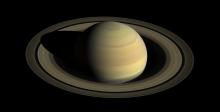Listen to today's episode of StarDate on the web the same day it airs in high-quality streaming audio without any extra ads or announcements. Choose a $8 one-month pass, or listen every day for a year for just $30.
You are here
Summer Solstice
The modern calendar is one of the oldest and most basic astronomical instruments. It measures the relative motions of Earth and the Sun. A day, for example, is the average length of time it takes the Sun to return to the same place in the sky: 24 hours. And a year is the time it takes Earth to make one complete turn around the Sun.
So perhaps it’s not surprising that the calendar uses astronomical definitions for the seasons: key points in the Sun’s annual migration across the sky.
Summer, for example, begins tonight here in the northern hemisphere, when the Sun stands farthest north for the year — a moment known as the summer solstice. And the season lasts until the September equinox, when the Sun crosses the equator from north to south. The solstice also marks the longest day of the year.
For centuries, the calendar was timed to match the seasons as well. In Great Britain and its American colonies, for example, the year began at the spring equinox in March. It wasn’t until 1752 that the British calendar was changed to move the start of the year to January 1st.
Of course, astronomy isn’t the only way to mark the seasons. Meteorologists, for example, have a slightly different range for summer: from the first of June through the end of August. And families follow the school calendar, in which summer also spans June through August — different ways to mark the cycles of the Sun.
We’ll have more about the Sun tomorrow.
Script by Damond Benningfield





